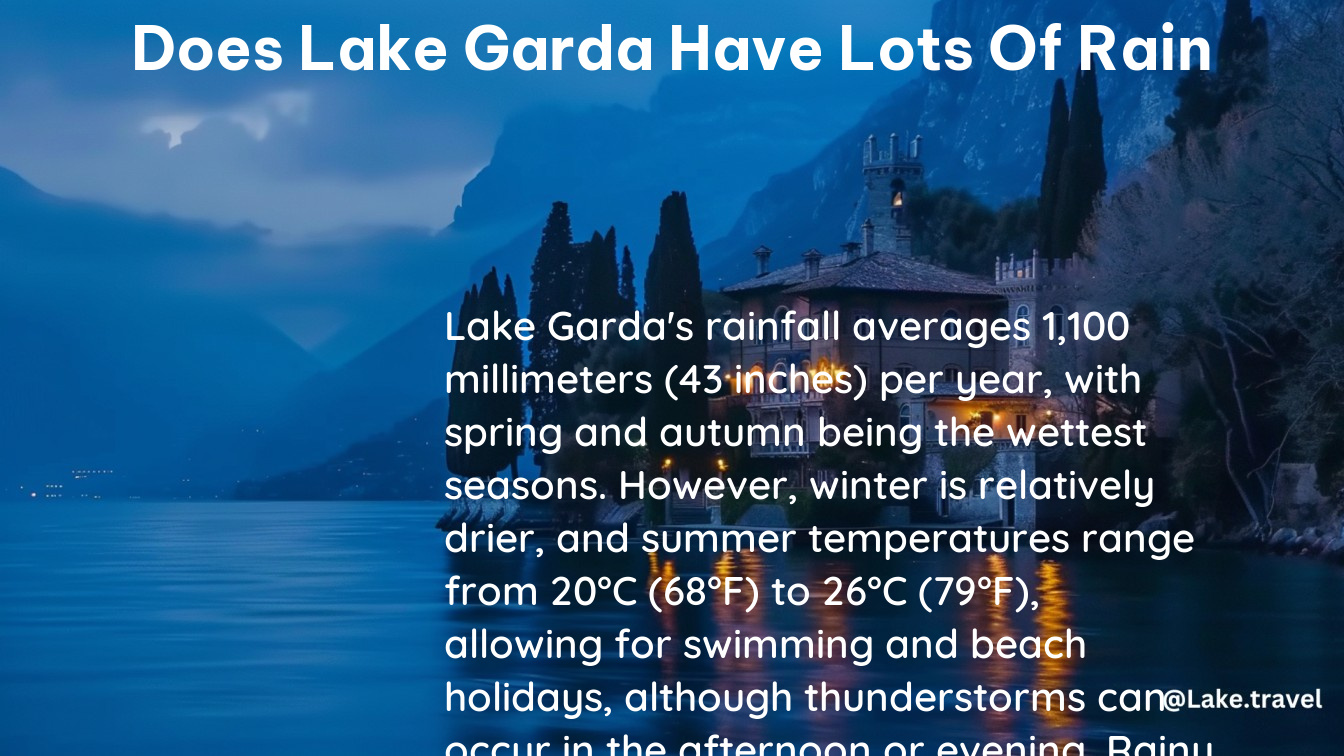Lake Garda, located in northern Italy, is known for its picturesque landscapes and temperate climate. However, one question that often arises among travelers is whether the region experiences a significant amount of rainfall. In this blog post, we’ll explore the rainfall patterns around Lake Garda and provide you with the information you need to plan your visit.
Rainfall Patterns Around Lake Garda
Lake Garda’s location in the northern part of Italy means that it experiences a Mediterranean climate, with distinct seasonal variations in rainfall. According to the data, the region around Lake Garda receives an average of 1,100 millimeters (43 inches) of rain per year, which is quite substantial compared to other parts of Italy.
The rainfall is not evenly distributed throughout the year, however. The spring and autumn months tend to be the wettest, with the months of April, May, October, and November typically seeing the highest levels of precipitation. During these seasons, visitors can expect to encounter more frequent rain showers and thunderstorms.
In contrast, the summer months, particularly July and August, are generally drier, with fewer rainy days. This makes the summer an attractive time for those seeking sunny and warm weather to enjoy the lake’s beaches, water sports, and outdoor activities.
Variations in Rainfall

It’s important to note that the rainfall around Lake Garda can vary significantly from year to year. While the region generally experiences a substantial amount of precipitation, there have been instances of prolonged dry spells and droughts, such as the summer of 2015, when the lake’s temperature reached as high as 25/26 °C (77/79 °F).
These variations in rainfall can be influenced by a variety of factors, including global weather patterns, local microclimate conditions, and the lake’s own moderating effect on temperatures. As a result, it’s essential to check the weather forecast and be prepared for the possibility of both wet and dry conditions during your visit.
Thunderstorms and Hail
In addition to the overall rainfall patterns, Lake Garda is also known for its frequent thunderstorms, particularly during the summer and spring months. These storms often occur in the afternoon or evening and can be quite strong, sometimes accompanied by hail and wind gusts.
While these thunderstorms can be a nuisance for outdoor activities, they can also be a fascinating natural phenomenon to witness. Visitors should be prepared with appropriate clothing and be aware of any weather warnings or advisories during their stay.
Temperate Microclimate and Vegetation
Despite the significant rainfall, Lake Garda’s temperate microclimate allows for the cultivation of a variety of crops, including grapes, olives, and citrus fruits, along its shores. The lake’s moderating effect on temperatures also means that the winters in the region are generally milder than in the surrounding areas, such as the Po Valley or the sub-Alpine valleys.
This unique microclimate and the abundance of rainfall contribute to the lush and diverse vegetation found around the lake, making it a popular destination for nature enthusiasts and outdoor enthusiasts.
Planning Your Visit
When planning a trip to Lake Garda, it’s essential to consider the rainfall patterns and be prepared for the possibility of wet weather. Packing appropriate clothing, such as rain jackets, umbrellas, and comfortable walking shoes, can help ensure that you can enjoy your time around the lake, regardless of the weather conditions.
Additionally, it’s a good idea to research indoor activities and attractions in the region, such as museums, galleries, and historic sites, in case the weather does not cooperate with your outdoor plans.
By understanding the rainfall patterns and being prepared for the possibility of wet weather, you can make the most of your visit to the beautiful and picturesque Lake Garda.
